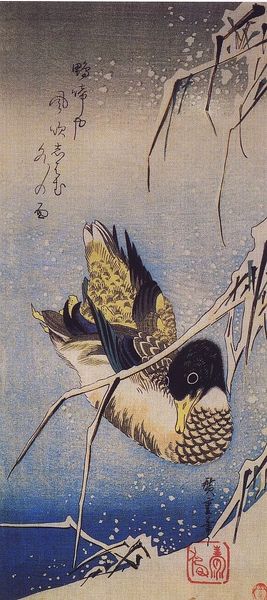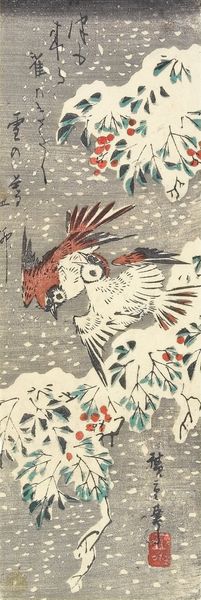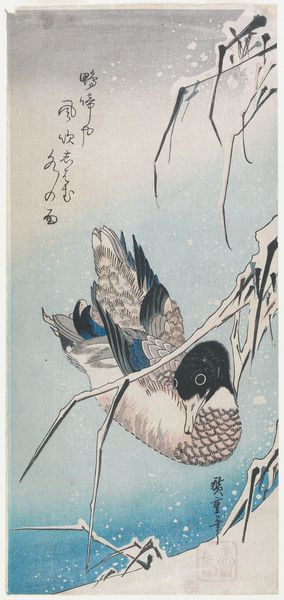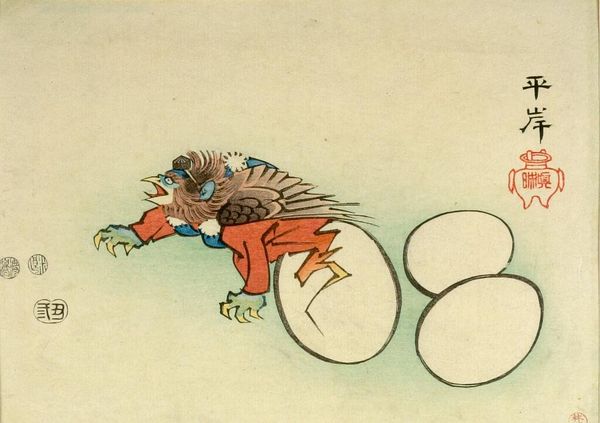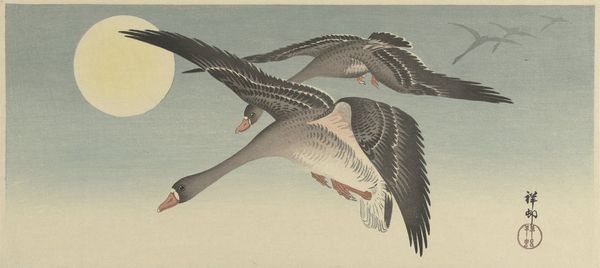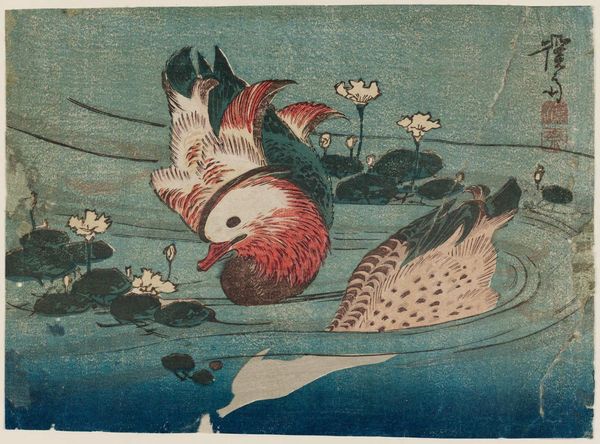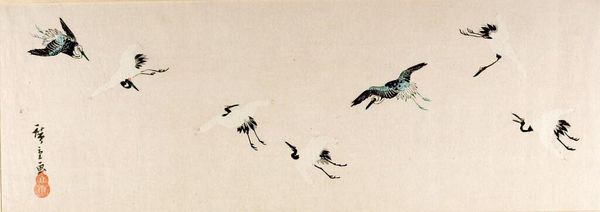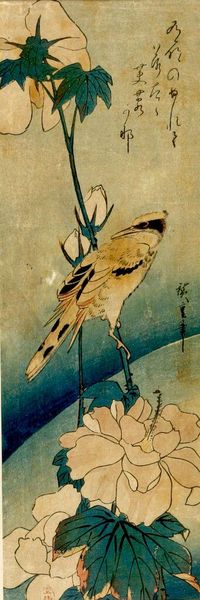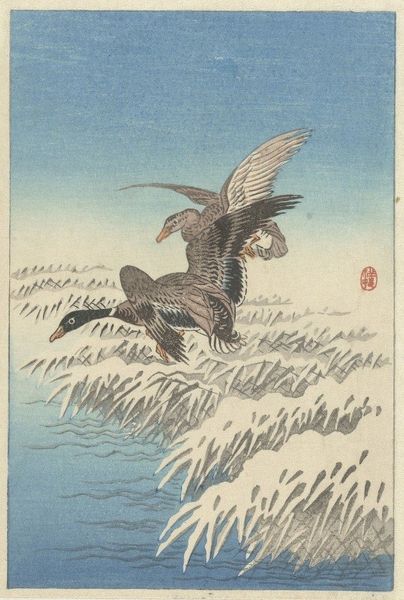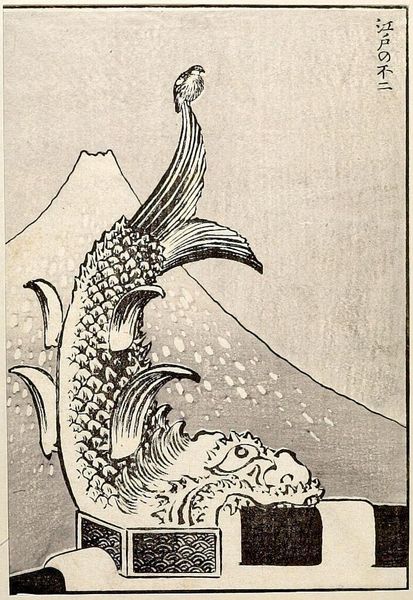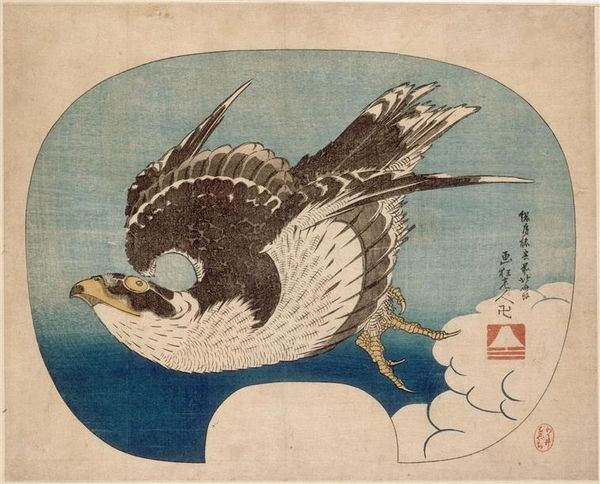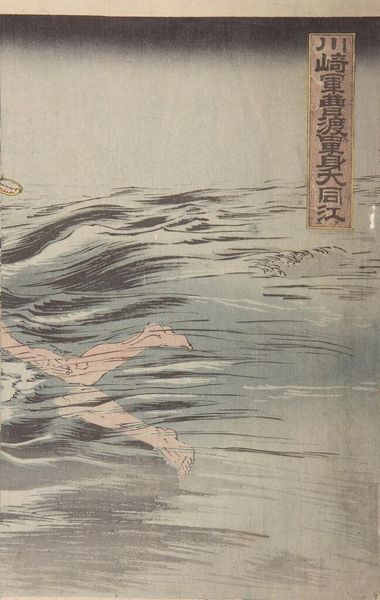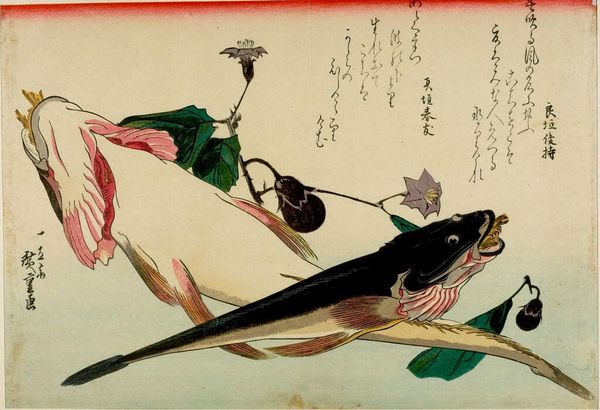
Copyright: Public domain
Curator: Utagawa Hiroshige's woodblock print "Crane and Wave", dating from about 1830, strikes me immediately with its dynamic composition and tranquil aura. The use of the stark color blue makes this piece stand out from many of his others. What is your take on the use of negative space? Editor: Yes, "Crane and Wave," showcases Hiroshige’s brilliant utilization of the ukiyo-e woodblock printing process. It would be easy to overlook the sheer labor that went into producing something like this at the time, as well as the networks and distribution models required to produce and distribute these affordable artworks to such a wide consumer base in 19th-century Japan. Curator: The wave, rendered almost calligraphically, creates a visual counterpoint to the crane. Its elegance speaks to something. The sweeping curve of the water draws the viewer's eye towards the plunging bird. The stark white of the bird set against the watery blues creates dynamism and calmness simultaneously, a curious contrast. Editor: True, and let's not forget that Hiroshige didn't operate in a vacuum. Woodblock printing involved publishers, block carvers, and printers—a collective endeavor reliant on both individual artistry and specialized labor. Consider, too, the socio-economic implications; these prints weren't just art, they were commodities in a booming urban marketplace. Curator: Interesting point about the network of production... back to pure form; the details such as the wisps of the wave, and the precision used to represent the legs of the crane show such sophistication. It is hard to separate meaning and composition in this art, it brings out a kind of ethereal experience. Editor: These prints often functioned as visual guides and sources of news or cultural connection within a larger material culture. Moreover, ukiyo-e significantly shaped Western art, influencing Impressionism and Post-Impressionism—a testament to cross-cultural dialogue and appropriation. Curator: I am impressed. We often look past how it impacts the working class who were a part of production to appreciate it as a standalone work of art, separate from all these conditions. Editor: It's a potent piece on its own, but I always consider how the production context influenced this artwork's creation. Perhaps what Hiroshige would find more of an honor than to look at it just on the terms of fine art, but the sheer implications it has culturally. Curator: Thank you for pointing it out for those of us so embedded into the aesthetic aspect of artworks.
Comments
No comments
Be the first to comment and join the conversation on the ultimate creative platform.
